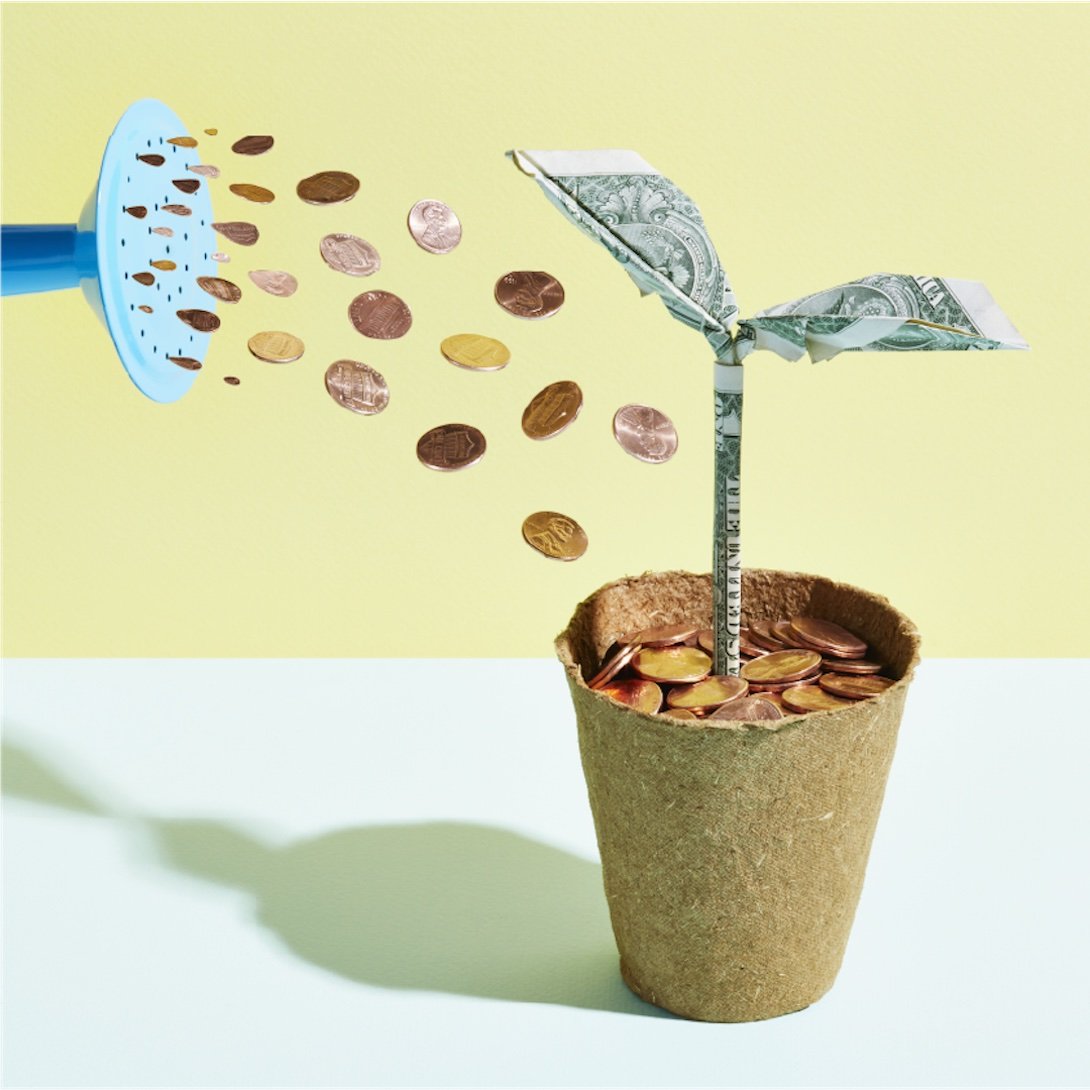The new way to provide more buying power for customers is flipping “Buy Now, Pay Later” on its head.
Buy Now, Pay Later (BNPL) is a popular payment solution for consumers who want to split their purchases over time, often in four installments.
These popular payment solutions are recently becoming more prominent with everyday purchases; in the first two months of 2023, online groceries’ share of BNPL orders grew a statistical 40 percent, a troubling sign that cash-strapped consumers are now using Buy Now, Pay Later for essentials, increasing the risk of non-payment and future inability to access such programs.
While BNPL solutions certainly fill a specific need, enterprises have a new opportunity to provide more options for customers who want to make a purchase, but who may not want to or be able to take advantage of credit solutions like BNPL.
A new payment option: Save Now, Buy Later
Instead of asking customers to take on more debt to fund their next purchase, enterprises now have the ability to create “Save Now, Buy Later” accounts for their customers who want to save for their next purchase.
Save Now, Buy Later (SNBL) is a short-term savings account that allows customers to save up for a future purchase with the company and get discounts for using the account.
Especially as ‘Customer Acquisition, Retention and Engagement’ remains a top priority for retail CMOs according to the recent Gartner 2022 CEO Survey, Save Now, Buy Later creates a new opportunity for enterprises to more deeply engage their existing customers, and empower new customers to make a purchase with the brand.
To illustrate how Save Now, Buy Later works for the consumers, consider a recently married couple who is preparing to buy their first home, and who has been told by their bank to not open any additional credit accounts or make any changes to their financial situation during the financing and closing process. The couple knows that they’re going to be in need of appliances very soon, but they don’t readily have the thousands of dollars in cash to purchase all of their appliances. The couple picks out their appliances and saves them in their Home Depot account. Home Depot could then calculate and present to the couple how much they’ll need to deposit into the account each week to save enough and purchase the appliances by the time they move into their new home. The couple easily saves up for their new appliances, and then continues to use that account to save up for their first big home project - finishing their basement.
Save Now, Buy Later is well-suited for large purchases like in the above example, but can also be seen in the popular Starbucks loyalty program, where customers connect their payment cards to fund their Starbucks account, to then receive extra Stars on every purchase utilizing that account.
Starbucks benefits in a few ways. First, Starbucks customizes program details to encourage customers to load funds; Starbucks encourages loyal customers to load their accounts, earning two Stars for every dollar spent - double what they offer for customers using a non-Starbucks branded card.
Starbucks also benefits from what is essentially an interest-free loan from consumers, and then earns yield on the more than $1.6B (yes, Billion) customers hold in their Starbucks accounts to fund additional discounts and offers for customers.
Utilizing an embedded finance provider, enterprises can easily launch a similar program, customizing details like loading increments and automatic account loading so customers can easily save for their next big purchase.
How Save Now, Buy Later works:
Step 1. The enterprise enables accounts, allowing consumers to open and access their new account directly in an existing mobile app.
Step 2. The enterprise customizes program details, like creating the ability to calculate how long it will take to fund a specific purchase, or allowing consumers to set up automated deposits in dollar increments or allocate a portion of their salary.
Step 3. Consumers open an account and connect their payment cards and accounts to fund their new account, and begin to save for their next purchase.
Step 4. Consumers come back to the app to check their account balance, add funds to their account, or adjust their automated deposit amount.
Step 5. The consumer's next big purchase is fully funded! The customer uses their virtual card tied to their account to make their purchase. Importantly, when the consumer uses that virtual card, the payment is entirely in-network for the enterprise, meaning, the enterprise saves on traditional payment processing fees at the point of purchase.
How consumers benefit from utilizing Save Now, Buy Later accounts:
-
Make it easy to save - Save Now, Buy Later makes it easy for consumers to allocate funds for their next purchase, by setting up automatic payments to the account using connected cards and accounts
- More payment options - Save Now, Buy Later provides another option for consumers to make their purchase. Importantly, the addition of a SNBL option doesn’t negate a Buy Now, Pay Later option. In fact, providing more options to consumers can increase the likelihood of purchase.
- Discounts on their next purchase - Since the enterprise earns yield on the funds in the accounts, they can apply those earnings to fund discounts to their consumer to encourage consumers to save even more and make their next big purchase.
- Full access to funds - While consumers are incentivized to use their funds to make a purchase with the brand, consumers can rest assured knowing that if they change their mind or need their funds for something else, they can always easily remove their money from the account.
How enterprises benefit from enabling Save Now, Buy Later accounts:
-
Increase average ticket size - When enterprises make it easy for consumers to save, they have a new opportunity to increase cart size. For example, a customer in need of a new TV may only have enough cash for a used TV or maybe a new 40 inch TV, but if they open an account and save a portion of their paycheck for the next 4 paychecks, they instead have enough to purchase a 65 inch 4K TV and a sound system.
-
Increase app engagement - While consumers can “set it and forget it,” setting up automatic payments to easily fund their accounts, they’ll often return to view their accounts to check their account balance and see if they’ve fully funded their next purchase. According to SoFi, one benchmark study found that 36% of Americans check their bank account every day, while 30% check it once a week. When consumers come back to check their account balance, the enterprise has a new opportunity to engage consumers and provide new offers.
-
Reach new audiences - According to LendingTree, 42% of Americans say their credit scores prevented them from obtaining a financial product in the past year, rising to 74% among those with poor credit. Save Now, Buy Later enables enterprises to reach new customers who may not qualify for credit, enabling them to easily save for their next purchase.
-
Earn yield on funds in accounts - Enterprises can leverage the funds in the consumer accounts, using funds as an alternative to traditional loans, or holding the funds in an interest bearing account. The yield earned on accounts can be applied to the bottom line, or many enterprises reinvest those earnings back into customer loyalty programs with discounts and offers to encourage existing Save Now, Buy Later consumers to save more, or to bring new customers into the program.
-
Avoid transaction fees at the point of sale - When customers use their branded accounts and virtual cards to make a purchase, the enterprise issuing the accounts and cards eliminates traditional transaction fees, because the payment from the account to the enterprise is entirely in-network.
-
Earn interchange revenue on purchases outside of the ecosystem - Enterprises can opt to make their Save Now, Buy Later accounts and virtual cards open-loop (able to be used anywhere Visa or Mastercard is accepted) or closed-loop (only able to be used with the enterprise). Enterprises issuing an open loop card retain the revenue that would otherwise flow to the issuing bank. This additional revenue funds the cashback and other rewards. Cashback can be deposited into consumers' Save Now, Buy Later account, helping them save even faster for their next purchase.
Product categories that should consider Save Now, Buy Later:
While Save Now, Buy Later options can be applied to many organizations, there are two purchase attributes that are particularly well-suited:
Large, less frequent purchases - Consumers can save overtime to fund a large, upcoming purchase.
Home improvement
Hospitality and travel
Electronics
Appliances
Vehicles
Season tickets
Clothing
Sports and hobbies
Luxury goods
Everyday purchases - Consumers can allocate funds they were already planning to spend on frequent purchases.
Grocery
Gas
Fast food or quick service restaurants
Whether its a university empowering students to fund their accounts a little each week to pay for next semester’s books, or a home improvement store enabling consumers to save over time for their bathroom remodel, Save Now, Pay Later gives enterprises the opportunity to provide more payment options to consumers, and make it easier for consumers to purchase.
Selecting the right partner is an important step in building your Save Now, Buy Later program, as programs should be built to meet ever-evolving customer expectations.
Read now: Considerations in selecting the right embedded finance partner
For enterprises ready to learn more about implementing a Save Now, Buy Later solution, the team at Alviere will work with you to better understand your unique customer base, define program details, then create a custom financial model to quantify the financial impact.
To receive a personalized financial model to evaluate the addition of Save Now, Pay Later, request a custom model today.




